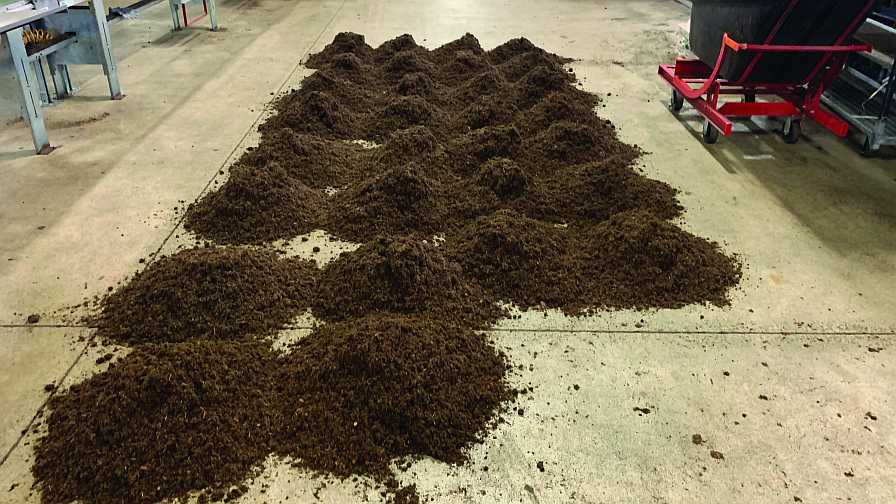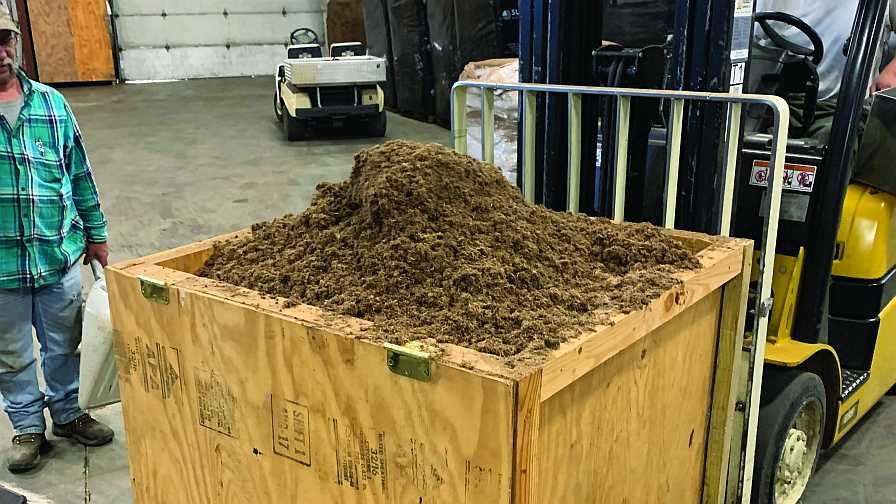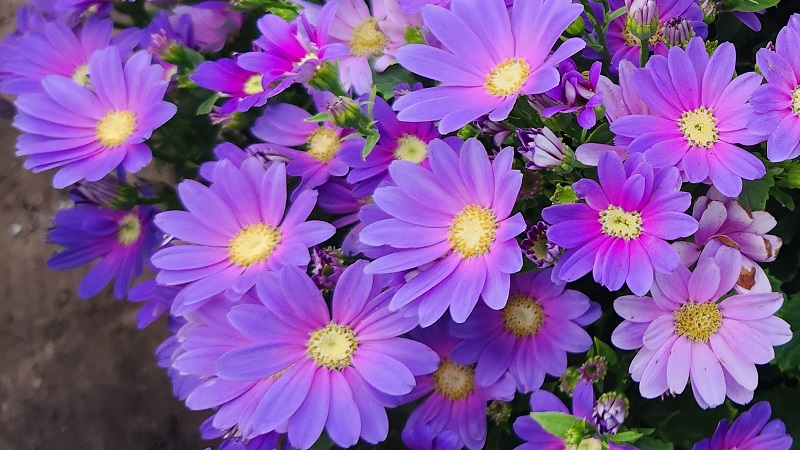Calibration is Critical in Soil Mixing
Along with regularly testing all incoming raw materials as well as final growing media blends, it is critical to run routine calibrations on your mixing equipment. Profile Products created a cubic foot blending box as a tool for calibration to help growers and blenders alike.
The methods highlighted in this article are the best practices and techniques used by the Profile Products team to assure that HydraFiber and all other raw substrate components are calculated and dosed into blends at the right amount.
Obtain a Baseline Measurement
- Raw substrate materials being measured must always be in a fluffed state.
- Use soil system controls to make 1 cubic yard of all substrate materials and components. A smaller amount can be run if your system is set to a lower frequency.
- Collect bulk mix into a 1-yard box or other collection vessel. If you are running material into a 1-yard box, it is likely you will see space at the top of the box due to gravity and compaction.
- After collection, empty the contents onto the ground or floor.

When measuring large quantities, lay out measured substrate so you can accurately track how many boxes were measured. Yield results will determine the next step.
Photo courtesy of Profile Products
Using the Cubic Foot Blending Box
- Place the blending box near the collected pile, with enough available work space for filling and measuring.
- Using a shovel, scoop material being measured and gently place it into the blending box. Be careful not to hit the box with your shovel to cause artificial settling.
- Fill the blending box until the substrate is approximately 1 to 2 inches above the top of the box.
- Once the blending box is filled, use your hand to gently move substrate into any pockets at the top of the box. Do not compress raw materials being measured, as this creates artificial compaction, which will give incorrect results.
- Use the straight edge to level the surface with the top of box. To do this, start at the center and gently sweep the first half off the box, then return to the center and sweep to the other direction. Never add more substrate after leveling or moving the box.
- If needed, the Blending Box can be moved, being careful to not spill the contents. The contents will settle when moving, which is acceptable.
- When measuring large quantities, lay out measured substrate so you can accurately track how many boxes were measured. Yield results will determine the next step. If yield is 27 cubic feet +/- 1 cubic foot, you are ready to determine each raw material input percentage. If yield is greater than 28 cubic feet or less than 26 cubic feet, the mix line must be recalibrated. Your equipment supplier can assist if needed.

Collect bulk mix into a 1-yard box or other collection vessel. If you are running material into a 1-yard box, it is likely you will see space at the top of the box.
Photo courtesy of Profile Products
Measuring Amount of Peat in the Mix
- Turn off the infeed or adjust the percentage to zero.
- Use soil system controls to make 1 cubic yard. A smaller amount can be run if the system is set to a lower frequency.
- Collect peat into a 1-yard box or other collection vessel.
- After collection, empty the contents on the ground or floor. Follow the steps outlined in the Blending Box guidelines above.
- Using a 60-yard per hour system and a 1-cubic yard call, with a target of 60% peat: 40% HydraFiber, the yield should be 16.2 cubic feet of peat only. If peat adjustment is needed, this can be done by either adjusting the peat outfeed gate or adjusting the speed of the peat bin belt. Contact your equipment supplier for additional details or assistance.
Cubic Foot Blending Box Care
Do not stand or sit on the Blending Box and handle with care when not in use. Box dimensions are critical to help properly calibrate equipment; dents and dings alter the shape and affect calibration. We recommend that you periodically measure the internal dimensions of the Box to ensure measurement of 12 inches x 12 inches x 12 inches.

If needed, the Blending Box can be moved, being careful to not spill the contents. The contents will settle when moving.
Photo courtesy of Profile Products
If the Blending Box becomes damaged or you need additional boxes, any wood, plastic, or metal box can be used.









